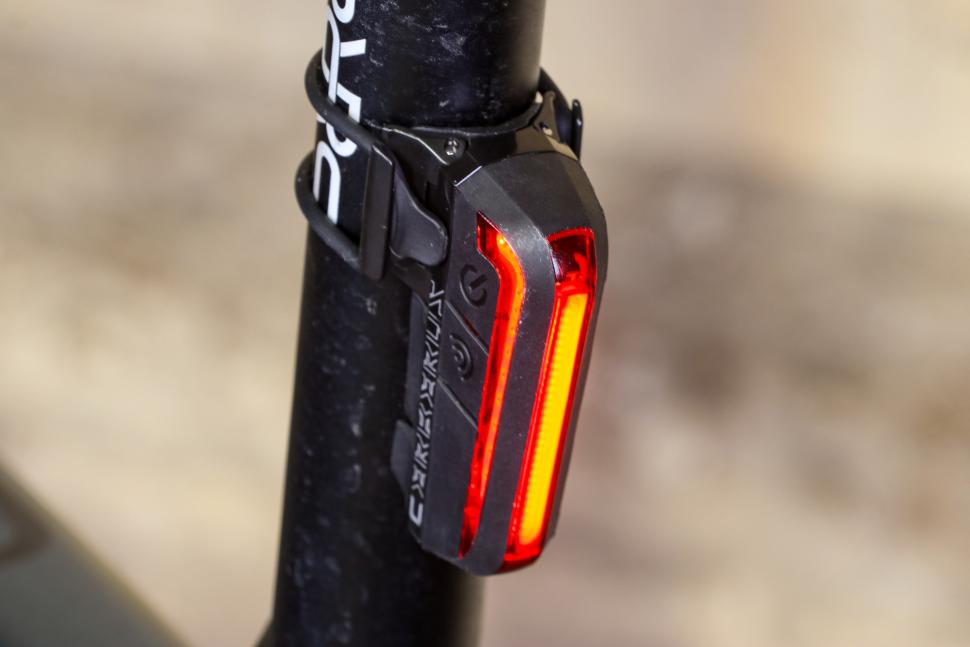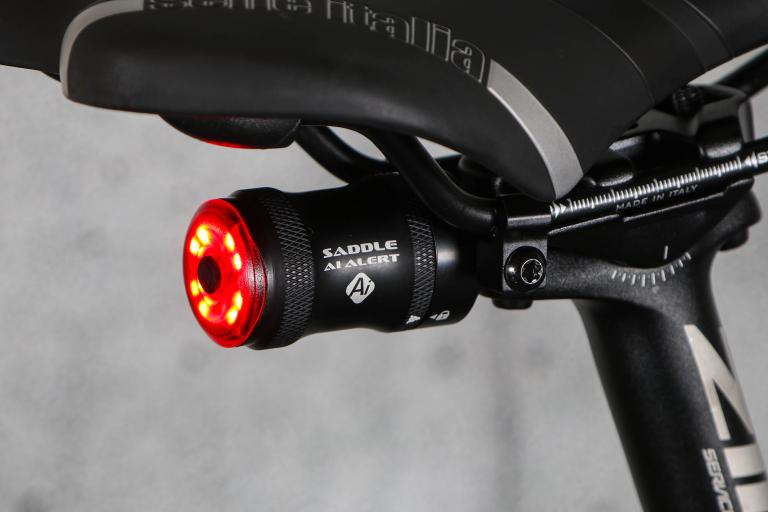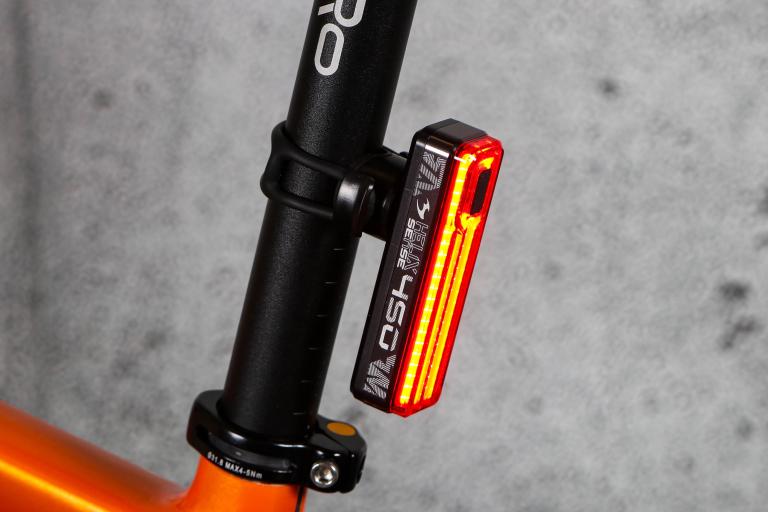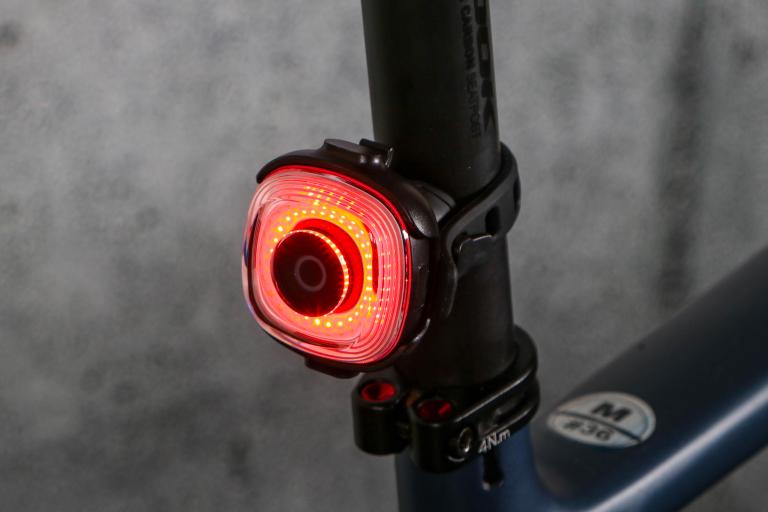- News
- Reviews
- Bikes
- Accessories
- Accessories - misc
- Computer mounts
- Bags
- Bar ends
- Bike bags & cases
- Bottle cages
- Bottles
- Cameras
- Car racks
- Child seats
- Computers
- Glasses
- GPS units
- Helmets
- Lights - front
- Lights - rear
- Lights - sets
- Locks
- Mirrors
- Mudguards
- Racks
- Pumps & CO2 inflators
- Puncture kits
- Reflectives
- Smart watches
- Stands and racks
- Trailers
- Clothing
- Components
- Bar tape & grips
- Bottom brackets
- Brake & gear cables
- Brake & STI levers
- Brake pads & spares
- Brakes
- Cassettes & freewheels
- Chains
- Chainsets & chainrings
- Derailleurs - front
- Derailleurs - rear
- Forks
- Gear levers & shifters
- Groupsets
- Handlebars & extensions
- Headsets
- Hubs
- Inner tubes
- Pedals
- Quick releases & skewers
- Saddles
- Seatposts
- Stems
- Wheels
- Tyres
- Health, fitness and nutrition
- Tools and workshop
- Miscellaneous
- Cross country mountain bikes
- Tubeless valves
- Buyers Guides
- Features
- Forum
- Recommends
- Podcast
review
£34.99
VERDICT:
With its amazing side visibility and all-round versatility there aren't many lights at this price that can shade the Cerberus
Weight:
35g
Contact:
At road.cc every product is thoroughly tested for as long as it takes to get a proper insight into how well it works. Our reviewers are experienced cyclists that we trust to be objective. While we strive to ensure that opinions expressed are backed up by facts, reviews are by their nature an informed opinion, not a definitive verdict. We don't intentionally try to break anything (except locks) but we do try to look for weak points in any design. The overall score is not just an average of the other scores: it reflects both a product's function and value – with value determined by how a product compares with items of similar spec, quality, and price.
What the road.cc scores meanGood scores are more common than bad, because fortunately good products are more common than bad.
- Exceptional
- Excellent
- Very Good
- Good
- Quite good
- Average
- Not so good
- Poor
- Bad
- Appalling
The Moon Cerberus has a three-sided COB (chip on board) design that supplies outstanding side visibility, an innovative hinge system that makes it compatible with all shapes of seatpost, and a dimmer function that allows you to fine-tune your output and battery life.
- Pros: Best-in-class side visibility, fits any seatpost, aerodynamic shape, modes sensibly limited to five
- Cons: Buttons not easy to use with gloves, removable rubber bung easy to lose, uses USB-C cable
Side visibility is an afterthought for most light manufacturers, but the Moon Cerberus supplies genuine 270-degree coverage and is as bright from the left or right as it is from the rear. Instead of a curved lens or cutout that is supposed to spread the light from rear-facing LEDs sideways, the Cerberus has three separate LED strips with two of them dedicated to sideways light. For those heart-in-mouth moments when you're passing a junction that's full of dozy drivers ready to SMIDSY you, it's game changing.
Unlike other manufacturers, Moon has sensibly kept the mode count to five, sparing the endless scrolling that some require. There are two constants and three flashing, including a retina-searing day flash, my favourite.
> Buyer's Guide: 17 of the best rear lights for cycling
The constant modes are a claimed 3:30 and 1:45 but these can be stretched to 18 hours using the VLS button (variable lumen system), which is basically a dimmer switch to preserve battery life or spare your riding mates' eyes. VLS can also be applied to the flashing modes.
The buttons are more like pressure pads, flush with the casing, and are not easily operated with gloves on. The VLS button sits right next to the on/off so ideally you need to be looking at them, meaning you perform any lumen-fettling while stationary.
And unlike most lights, the Cerberus is not just designed for a round-profile seatpost. The clamp has a clever system whereby two hinged wings and a flexible rubber pad make it fit both round-section and the sharpest bladed seatposts. You choose from three supplied rubber bands in the box to get the right fit, but any rubber band will do, such as the ones that come with Garmin stem mounts.
The rubber pad that sits against the seatpost conceals and waterproofs the USB port and does a good job: the force of the rubber band squeezing it to the seatpost ensures it's always tightly plugging the USB port. It's a shame it's removable, though, because in a house with children, any interesting-looking thing like that tends to disappear never to be seen again.
Charging is with a USB-C cable, which is not the same as the micro USB that most devices use. Moon says USB-C is the new generation and is more convenient with better charging performance, but at the moment it's not very convenient to have to use a specific cable – even though charging is quick at two hours.
Value
For what it is and what it does, the Moon Cerberus is very good value. The Lezyne Strip Drive 150 costs the same and has the same lumen count, but lacks the side visibility feature and the bladed seatpost compatibility. The Knog Cobber Mid does supply coverage at the sides with its curved design and goes up to 170 lumens but costs £59.99, and with its gap between light and seatpost will not be as aerodynamic.
Conclusion
With its genuine 270-degree visibility, compatibility with aero seatposts, powerful output (especially impressive is the retina-searing day flash), extendable run-times, aerodynamic shape and low weight there aren't many lights that can shade the Moon Cerberus at this price point. I predict it will be particularly popular with time triallists now that rear lights in CTT time trials are compulsory as of 1st January 2020. It misses a perfect 10 because of the rubber bung that can be easily lost and the USB-C cable it uses.
Verdict
With its amazing side visibility and all-round versatility there aren't many lights at this price that can shade the Cerberus
road.cc test report
Make and model: Moon Cerberus rear light
Size tested: 150 lumens max
Tell us what the light is for, and who it's aimed at. What do the manufacturers say about it? How does that compare to your own feelings about it?
Moon Sport's website says: "What is Cerberus? Your side guardian. Reduce the risk of collision from the rear side and the rear end. Get extra visible angles and become more eye catching while passing thru an interaction (sic), side street, alley and driveway. The 3 direction tail light makes you brightly exposed to the rear LEFT, rear END and rear RIGHT."
Tell us some more about the technical aspects of the light?
Specification
Model: Cerberus
LED: 3 cob red LEDs
Max lumens: 150 LM
Max runtime: 120 hours
Battery type: 500mAh Li-PO built-in
Recharge time: 2 hrs
Size (W x D x H): 18x27x64mm
Rate the light for quality of construction:
9/10
This is a really nicely made light with a good-quality look and feel.
Rate the light for design and ease of use. How simple was the light to use?
7/10
The on/off button and the VLS (variable lumen system) button are next to each other and are not actually buttons – rather pressure pads that are flush with the casing. This is probably good for aerodynamics but makes it difficult to operate these with thick gloves on when stationary and impossible on the fly. However, since you would need to be looking backwards for seconds at a time while the VLS dims or brightens, I am guessing it is not meant to be operated on the fly.
You switch between constant and flashing modes (two and three respectively of these) by double-clicking the on/off button, which again is not feasible with winter gloves on and even without gloves has to be done when stationary.
Operation of the modes is intuitive enough and it's nice that Moon has kept it simple with just five in total.
Holding down the variable lumen system button allows you to turn up or turn down the brightness of any of the five modes and is a nice idea.
Rate the light for the design and usability of the clamping system/s
8/10
The clamp has a clever system whereby two hinged wings make it fit both round-section and bladed seatposts. You choose from three supplied rubber bands in the box to get the right fit, but any rubber band will do, such as the ones that come with Garmin stem mounts.
There's a removable rubber pad at the rear that sits against the seatpost. This conceals and waterproofs the USB port and does a good job, but it's a shame it's removable, because removable in my house means easily lost.
Rate the light for waterproofing. How did it stand up to the elements?
9/10
Good waterproofing design. The rubber bung is forced into the USB port when the light is clamped to the bike. It stood up to the elements well and the USB port stayed dry.
Rate the light for battery life. How long did it last? How long did it take to recharge?
10/10
It has to get a perfect 10 for this. With the VLS (variable lumen system) you can almost make it run forever (a claimed 140 hours, which I can't claim to have verified), and charging is two hours as advertised. It's just a shame that it uses a USB-C cable, which Moon says is the new generation of USB for more convenient and better charging performance. Since all other devices use micro USB at the moment that makes it highly inconvenient if you lose the cable.
Rate the light for performance:
10/10
The 270° cob design is truly excellent. Every cyclist gets terrified passing a T junction at night, wondering if dozy drivers have seen them. The LEDs on the side of the Cerberus are as bright as the one on the rear so chances of being seen are massively improved.
The day flash is really blinding and is my favourite. Being able to dim the constant for group riding is pretty handy too – but has to be done stationary and not on the fly.
Rate the light for durability:
9/10
It seems tough and durable. The hinge system is robust enough and the rubber pad has not degraded at all a month in.
Rate the light for weight:
9/10
Since the casing is plastic it's light as you can expect – lighter than the metal-cased Exposure lights, for example.
Rate the light for value:
8/10
Very good value for its brightness, run-time and versatile design. The Lezyne Strip Drive 150 costs the same, has the same lumen count but lacks the side visibility feature and the bladed seatpost compatibility. The Knog Cobber Mid does supply coverage at the sides with its curved design and goes up to 170 lumens but costs £59.99. For what it is and what it does, the Moon Cerberus is great value.
Tell us how the light performed overall when used for its designed purpose
As a night light and a daytime running light it is excellent, especially the day flash, which uses the full 150 lumens.
Tell us what you particularly liked about the light
I love the 'COB' shape that gives extra side visibility with dedicated left and right LEDs. I haven't used a light before that does this so well. The hinged wings that make it fit different types of seatposts are great: with its aero shape it would make a great daytime running light for time trials, in which rear lights are now compulsory.
Tell us what you particularly disliked about the light
I worry about losing the removable rubber pad/bung that has to be taken off for charging, and it's a shame it uses a different type of USB cable from all my other devices.
Did you enjoy using the light? Yes
Would you consider buying the light? Yes
Would you recommend the light to a friend? Yes
Use this box to explain your overall score
Although I've complained about how I might lose the rubber bung or the USB-C cable, I am giving the Moon Cerberus a score of 'Exceptional' because the amazing side visibility it supplies is so much more important. I also predict it will be a popular light with time triallists because of its aero shape and the ease with which it fits a bladed seatpost, not to mention the retina-searing day flash mode.
About the tester
Age: 50
I usually ride: Racer Rosa custom alu My best bike is: Colnago Master Olympic
I've been riding for: Over 20 years I ride: Most days I would class myself as: Expert
I regularly do the following types of riding: time trialling, commuting, touring, club rides, sportives, school run on a tandem
Latest Comments
- Blackthorne 2 sec ago
Entertaining read! I would also add that soupplesse is also a function of body mass. imagine an 80kg Contador 'dancing' up Mont ventoux!
- quiff 9 min 21 sec ago
Another oddity is that in the opposite direction it appears to be a bus and bike lane. If the timings are tight, I can imagine that crossing being...
- ubercurmudgeon 20 min 26 sec ago
If recent corporate trends are anything to go by, they'll be putting up price rises for customers and laying-off staff soon. Because if N billion...
- the little onion 35 min 36 sec ago
Because I like to keep people updated. I had a very helpful chat with CyclingUK today. Can't say too much, but I still firmly believe that they,...
- ROOTminus1 2 hours 22 min ago
Front page of the local rag, earlier in the week. How careless of the driver to let their car do that.
- chrisonabike 2 hours 21 min ago
Hmm... sounds like the usual "over-reaction due to previous under-reaction". (Think Waverley station here has also banned these?)...
- David9694 2 hours 37 min ago
"Just a flesh wound" was expecting to be the. 94th person to post...
- Global Nomad 2 hours 51 min ago
Is the end a regular circle? I.e would establishing the size of any circular object on a new chainring give you the same info on a worn one? Seems so.







Add new comment
19 comments
I bought this light for commuting to replace my Moon Meteor. It has a good selection of modes including a "pulse" one that I wanted, and you can change the brightness to make the battery last longer, but I agree with others it's tricky to navigate the options with the buttons.
What does drive me nuts (and I am surprised the reviewer did not pick up on this) is the mounting. It really is designed for no other option but a seat post - if like me you have a saddle bag permanently on your bike (essential to hold commuting spares) you are in trouble: I eventually managed to get it secure on one of the verticals on my rack but needed to use a couple of cable ties beneath it to stop it sliding, and if I didn't have the rack I'd have had no options at all. The other Moon lights I've had have been well designed and I assumed it was also going to be possible to do some other mounting option, maybe clipped to my saddle bag, but nope.
I'm also not a fan of how the light splits into 3 different parts (the light, the rubber backing and the rubber band) when you want to charge it - way more chance of losing something, especially the rubber band.
While the electronics and LEDs in lights is getting better, the outer case and mounting design seems to be going backwards.
I bought on this recommendation. But for me it's pants. **using and navigating the lamp functions, once you’ve found the largely invisible buttons, is complex and annoying**
Lamp could not be made secure on 8mm-diameter rear rack support, my chosen location – it wanted to rotate come what may. So it was seat post on my Trek Crossrip or nothing. There the lamp ended up a bit wobbly and angled downwards with no way of adjusting the angle – but that did not make much difference to light intensity, which was fairly good. But flashing in daytime was nowhere near as bright or effective as with my now eight-year-old **Moon Shield 60** (which I shall now have to keep going for a bit longer). The Cerberus attaches via a tabbed silicone ‘’O’’ ring (3 supplied) that hooks around your chosen stanchion and onto swivel clips at top third of the lamp, leaving the top of the lamp secure but not the lower section. Begging the question, why are the clips not central so the lamp is held squarely and tight? The back of the lamp consists of a removable silicone gasket that fits over three hex-bolt heads, seals the USB-C socket, and is held between the mounting surface and lamp by the ‘’O’’ ring. Therefore, to charge the lamp you have to dismount it - and not lose the ‘’O’’ ring or gasket. In the dark. Wearing gloves. It’s cold and raining. So, it’s just a matter of time before you lose one or the other and if it’s the eminently loseable gasket the lamp becomes useless, because obviously replacements are not readily available. The lamp charges - quickly - via USB-C socket behind lamp body. Chunkier USB-C plugs go into the socket but not enough to make contact, so you have to use the skinny lead / plug supplied, or other one you may have. The controls consist of two buttons at left top of the unit that are difficult to find by touch even without gloves, especially when lamp is on.
You really should review this bit about USB-C. That is actually pro, not con.
Maybe time to reverse the "con" awarded for USB-C charging? After all, like you say, "it's not very convenient to have to use a specific cable"; increasingly that means USB-C now has the advantage.
A bit pricy considering that its based on a design thats been available from Chinese manufacturers for nigh on 5 years and you can buy them at Amazon for £8.99 - just search for Cocopa Bike Tail Light and your quids in. You can see them from the side just like this one. They come with a USC C cable also. They can be awkward to switch off if you wear gloves, but hey they designed gloves so you can take them off too specifically address this first world issue. They even have a rubber base that is for some reason seperate from the rest of the light, but they invented super glue to correcct this tragic design failure. Had 4 sets of them for 5 years and not one's failed me yet and still going strong - love the way the chinese make such great products and keep the price sensible.
Moon lights are excellent and USB c is ace, no more fumbling around trying to get the sodding end the right way round
I have a moon front light and it also is USB C and my rear light is micro. I am so glad everything is moving over to USB C - less cables to ferry around.
My Gopro, Samsung S9+ are all USB-C. Not a problem.
Garmin forerunner 45, not sure what proprietary little bugger of a cable that is, if I lose that I am stonked.
I'm sure Garmin woyuld send you one. They sent my wife one for her model when it wouldn't charge.
USB-C is a definite improvement over USB-B if only because you can't try to plug it in the wrong way round. (It's also better as it can handle more power etc.)
Yeah, and in my experience, micro USBs are poor over the long term and tend to get loose at the gadget end, resulting in hit and miss charging. USB C *should* improve that as physical interface is bigger.
Its not the end of the earth USB C as I guess you can get an adapter but my garmin/lights/phone are all Micro USB B so I wouldn't be rushing out to buy one. I guess that's where the reviewer is comming from.
Am I missing something? Moon provides a USB C cable in the box. You just plug it into a wall charger or USB port. Ok, if it's your first USB-C device and you're used to having micro USB cables everywhere so you don't need to think about it (e.g. one at work, one at home) then it takes a little adjustment, but is it so hard to either (i) charge it in the place where the cable is; (ii) take the cable with you; or (iii) buy a spare cable?
Just need a USB A to USB C cable to charge from your usual source, no adapter required. Yeah, it's nice when all your devices can be charged from the same cable but soon enough all your devices will have switched over to USB C - that's what it's been designed for
They should be applauded for switching to USB C if they're doing it across the board - Unlike my Exposure lights which use a Mini USB on the TraceR and a Barrel plug on the Sirius
Don't quite a few smartphones come with usb-c? Mine did. Perhaps the reviewer is better off than me and can afford an iPhone?
Cable has standard usb A end
A7A3F6D7-E052-411C-9A02-C43FC3DD8871.jpeg
But what do you plug the cable into unless you purchase an adaptor?
Knocked for usb-c in this day and age - really? Especially as a cable comes in the box.